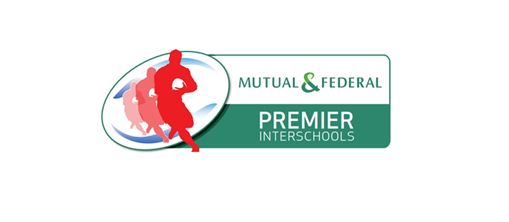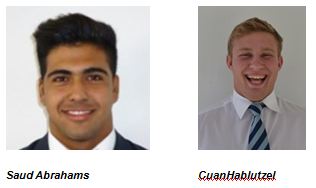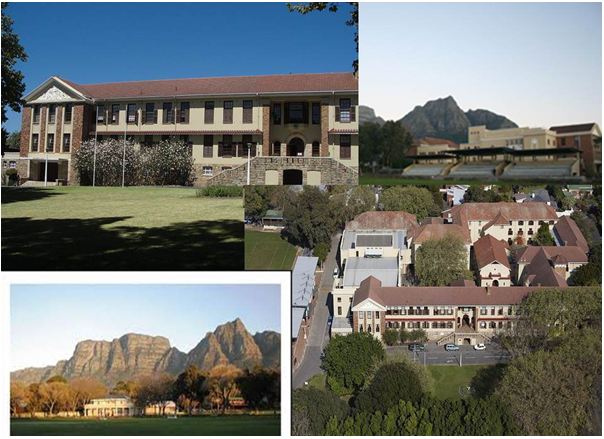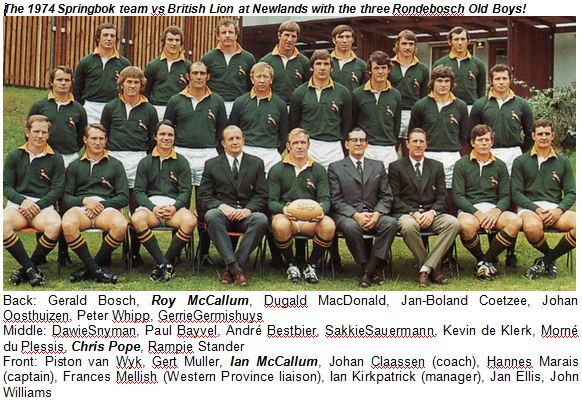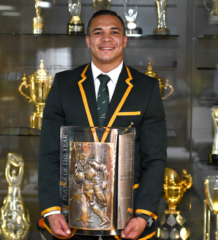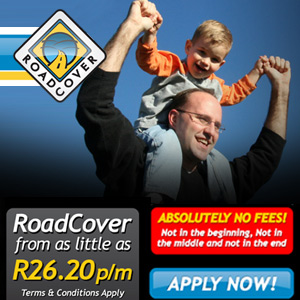Mutual & Federal Premier Inter-Schools: Diocesan College (Bishops) vs Rondebosch Boys’ High
JOHANNESBURG, 4 June 2013: Bishops will play Rondebosch Boys on the Piley Rees at Diocesan College on Saturday 8 June 2013, in a Mutual & FederalPremier Interschools match that will be televised LIVE on SuperSport 6 at 11:25.
Mutual & Federal Premier Interschools is a series of 12 matches, which feature the highest profile and most traditional interschool rugby rivalries, from South Africa’s top rugby schools, broadcast live on SuperSport from April to August.
Schoolboy rugby has served as one of the cornerstones of domestic rugby dating back more than a century, and true to its slogan “Honouring Heritage. Playing for the Future”,Mutual & Federal Premier Interschools is about History, Heritage and Tradition. The series, now in its second year, is expected to grow even stronger.
The Mutual & Federal Premier Interschools stories are further captured in 12 magazine shows which preview all the games and provide historical overviews of these traditional schools and highlight other academic, cultural and sporting achievements.
Magazine Show times as per Supersport schedule online:
Wednesday June 5 at 17:15-17:30 SS1
Thursday June 6 at 06:15 – 06:30 SS1
Friday June 7 at 22:45 – 23:00 SS7
Saturday June 8 at 11:15 – 11:25 SS6
Notes and background – Historic overview of the upcoming teams
Bishops vsRondebosch – Background Info
A rivalry that started way back in 1911 will continue this coming Saturday when the Rondeboschneighbours once again square up to each other. Although the two schools play each other twice in a season, the first encounter is always seen as the important one, where you can go one-up against the opposition. The Rondebosch boys only have to travel the odd 400m down the road to the lush Bishops fields so home ground advantage is not so prevalent in this case. This Saturday will be the 183rd time these two schools play each other, a truly remarkable record that have withstood the test of time and one of the oldest Schoolboy rugby Interschool’s in the country. A Premier event indeed!
Results down the Years
(1911-2012: BISHOPS won 97 vs RONDEBOSCH won 63 & Drew 17 )
1911: Bishops won 18-0 & 25-0
1916: Bishops won 13-0 & drew 13-13
1917: Bishops won 5-3 &Rondebosch won 14-3
1918: Bishops won 16-0 & drew 0-0
1921: Bishops won 6-0
1923: Rondebosch won 9-8
1925: Rondebosch won 22-3
1926: Bishops won 10-9 & 6-3
1928: Bishops won 8-3 & 15-3
1929: Bishops won 7-3
1930: Bishops won 15-9 & 12-9
1931: Bishops won 11-3 & 16-9
1932: Bishops won 9-3 & 15-0
1933: Bishops won 11-6 & drew 3-3
1935: Bishops won 6-3
1936: Bishops won 49-0 & 37-3
1937: Drew 0-0 & Bishops won 6-3
1938: Rondebosch won 8-3 & Bishops won 16-6
1939: Rondebosch won 8-0
1940: Bishops won 25-3 & 11-8
1941: Bishops won 13-9 &Rondebosch won 8-3
1942: Bishops won 16-4 & 10-3
1943: Bishops won 21-0 & 31-3
1944: Rondebosch won 21-14 & 6-0
1945: Rondebosch won 6-0 & Bishops won 11-8
1946: Drew 3-3 & drew 3-3
1947: Bishops won 6-3 &Rondebosch won 9-6
1948: Rondebosch won 17-13 & Bishops won 13-6
1949: Bishops won 23-0 & 17-6
1950: Drew 14-14 &Rondebosch won 17-6
1951: Bishops won 8-0 & 17-0
1952: Rondebosch won 6-3 & drew 3-3
1953: Rondebosch won 6-3 & 13-3
1954: Rondebosch won 11-3
1955: Bishops won 9-6 & 8-6
1956: Bishops won 11-0 &Rondebosch won 9-6
1957: Rondebosch won 5-0 & drew 3-3
1958: Rondebosch won 8-0 & 8-6
1959: Bishops won 10-0 &Rondebosch won 3-0
1960: Drew 3-3 &Rondebosch won 12-3
1961: Rondebosch won 5-0 & 13-6
1962: Bishops won 3-0 & drew 6-6
1963: Rondebosch won 11-0 & 9-6
1964: Rondebosch won 13-0 & 13-0
1965: Drew 0-0 & drew 3-3
1966: Rondebosch won 14-3 & 12-3
1967: Drew 3-3 &Rondebosch won 20-0
1968: Rondebosch won 6-0 & drew 8-8
1969: Rondebosch won 11-6 & 25-3
1970: Rondebosch won 14-0 & 11-9
1971: Rondebosch won 8-3 & 24-3
1972: Rondebosch won 13-4 & 13-4
1973: Rondebosch won 13-12 & Bishops won 16-13
1974: Bishops won 9-3 & 18-4
1975: Bishops won 27-3 & 22-6
1976: Bishops won 14-13 & 22-12
1977: Rondebosch won 15-12 & 33-7
1978: Drew 6-6 & Bishops won 8-6
1979: Bishops won 9-0 & 24-0
1980: Rondebosch won 22-12 & Bishops won 10-3
1981: Bishops won 12-6 & 7-6
1982: Bishops won 18-6 &Rondebosch won 12-6
1983: Rondebosch won 18-10 & Bishops won 16-6
1984: Rondebosch won 7-0 & 15-11
1985: Bishops won 12-3 &Rondebosch won 16-9
1986: Bishops won 14-4 & 13-3
1987: Bishops won 12-7 & 15-3
1988: Bishops won 10-3 & 13-3
1989: Bishops won 58-10 & 7-4
1990: Bishops 14-7 & 9-0
1991: Bishops 12-9 & 21-9
1992: Bishops 34-3 & 27-6
1993: Bishops 28-10 & 19-5
1994: Rondebosch won 6-5 & 19-9
1995: Rondebosch won 7-6 & 11-10
1996: Rondebosch won 17-7 & 6-0
1997: Rondebosch won 18-0 & 31-11
1998: Bishops won 20-0 &15-7
1999: Rondebosch 16-15 & Bishops won 24-9
2000: Rondebosch 22-19 & 27-17
2001: Bishops won 17-0 & 18-0
2002: Bishops won 52-8 & 41-25
2003: Bishops won 18-5 & 78-19
2004: Bishops won 27-8 &Rondebosch won 26-22
2005: Bishops won 31-6 & 14-12
2006: Bishops won 71-3 & 75-22
2007: Bishops won 48-27 & 27-24
2008: Bishops won 20-8 & 47-15
2009: Rondebosch won 16-10 & Bishops won 10-6
2010: Bishops won 38-10 & the sides drew 19-19
2011: Rondebosch won 34-18 & Bishops won 37-12
2012:Bishops won 15-2 &Rondebosch won 19-11
Preview 2013
The last few of years since 2009 matches between the two teams where very even. In the 8 matches played, Bishops won 4, Rondebosch won 3 and one match was drawn. Rondebosch is however the slight favorite for the 2013 derby if one has to go on current form. Bishops did show some glimpses of what they are capable of on their draw against Paul Roos and the narrow defeat against Paarl Boys.
Rondebosch showed some good form early in the season when they drew with Paarl Boys at the season opener festival at Newlands. They also had good wins against Tygerberg and SACS but their confidence might be slightly shaken after the loss they suffered against Paul Roos last weekend. They will rely on the game breaking skills of the WP Craven week fullback KhanyoNgcukana to put some spark in their backline against Bishops. Livewire scrumhalf Stef de Gouveia will again conduct play from the base of the scrum and give the Rondebosch backline some excellent service. Besides Ngcukana, tighthead prop Brett Paulse also made the WP Craven week team while de Gouveia and loosehead prop Kyle White both made the WP Academy team.
Rondebosch Craven and Academy Week representitaves.
Bishops will on their part look to 8th man Saud Abrahams as their go-to man. The big loosie was also picked for the WP Craven week team and loves to go on rampant runs from the back of the scrums. Rondebosch will have to keep a watchful eye on this playmaker. Also in the WP Academy side is hooker CuanHablutzel who is like a terrier on a loose ball and acts as a 4th loose forward for the Blues.
Bishops Craven and Academy Week representitaves.
This should be a cracker of a match as both teams see this match as vital to the season success!
What a win over Rondebosch means!
DIOCESAN COLLEGE – PROFILE
The Diocesan College, or Bishops as it is more commonly known, is an independent, all-boys school situated in the suburb of Rondebosch in Cape Town, South Africa. It consists of three schools: the College for grades 8 – 12 and post matric (an optional year following grade 12 which covers the A-levels); the Preparatory School for grades 3 – 7 and the Pre-Preparatory School for Pre-Kindergarten Grade 0-2.
Established in 1849, it is the fifth oldest existing school in Africa. The Collegiate of the Diocese of Cape Town (hence the name Diocesan College) was founded by Bishop Robert Gray, the first Anglican bishop of Cape Town, in 1849 at his house, Bishopscourt in Cape Town.[2] He founded two schools there, one of which was described as for the “native children” and the other for “European children” (this being the current school). Living with schools was hard for the bishop and this led him to establish the schools elsewhere. The black children moved to accommodation near the city, where Zonnebloem College now is. This movement left the bishop short of money and so he bought an unproductive farm in Campground Road, Rondebosch, to which the school was moved and on which it remains.The school did not prosper until Canon George Ogilvie arrived from prosperous St. George’s Grammar School, attached to St. George’s Cathedral, Cape Town in the city. The canon brought some boys with him and the bishop’s school flourished. It then became the Diocesan College, but that too was a mouthful and it was generally referred to as the Bishop’s school – hence its nickname. On arriving at Bishops, Canon George Ogilvie brought an early adoption of the game of rugby to the school which is noted as the introduction of rugby to South Africa.
Originally the school catered mainly for boarders, but since the 1970s it has had more day scholars than boarders. For some years it ran university classes, but in 1910 those classes left for the South African College, which was later to become the University of Cape Town.The school had only three principals between 1919 and 1982 – Harold Birt, Hubert Kidd, the first layman to be the principal, and Anthony Mallett. Since then it has had three more. Mr Guy Pearson is currently the Principal.
Since 1921, a post matric year has offered students the opportunity to write the University of Cambridge A-Level examinations. In recent times, girls have been admitted to this year. Boarding facilities are also available.The College has eight houses: Birt, Gray, Kidd, Mallett and Ogilvie for day-scholars. Founders, School and White are the boarding houses. Each house has about 70 – 100 students, who are looked after by a housemaster, who have one or two deputies. Tutors work in each house, and follow the progress of a student throughout his high-school career. Tutor groups are set up in a vertical system, meaning there are around 3–5 boys from each grade within in the tutor group.
The Preparatory School follows a similar structure with four houses: Van der Bijl (for boarders and day-boys), Bramley, Brooke and Charlton. Grades 6 and 7 feature “‘Home Groups”‘ which have a similar structure to Tutor Groups at the college but run on a more informal basis
Images of Bishops
The College offers numerous scholarships, mostly to new students in grade 8 which last until grade 12, covering certain percentages of the tuition fees of the college. The recipients of these scholarships are expect to maintain a high standard of excellence in their respective award areas, and scholarships may be forfeited if this is not done (For example, if a music scholarship recipient does not continue with music until grade 12, he will lose the scholarship).
Bishops is one of only four schools in the world to offer an annual Rhodes scholarship since 1901 to an ex-pupil to attend the University of Oxford. This is a result of the school having been part of the initial Rhodes Scholarship Experiment. When approached to help formulate the plan for the scholarship, Bishops was suggested by Mr Ernest Kilpin (later Sir Ernest, after he was knighted for services to the Union of South Africa) as a suitable school for the experiment and Cecil Rhodes agreed. Like Bishops’ founder Robert Gray, he mistrusted purely secular education..[3] A shortlist is selected yearly from boys who are matriculating that year and their progress is monitored. After completing their first degree, a student from the shortlist is awarded the scholarship for further studies at Oxford. Starting with the 2012 shortlist, alumni of St George’s Grammar School, St Cyprian’s School, Herschel and The LEAP School 1 will also be eligible for selection to the Scholarship.
Rugby at Bishops
There is a myth that William Webb Ellis started rugby. There is also a myth that Canon Ogilvie brought rugby to South Africa. In fact he detested the game and did not want Bishops to play it. What he brought to South Africa in 1861 was a form of football at a time when there was no game called soccer and rugby football was played only at Rugby School. Canon Ogilvie’s game was based on what was played at his old school, Winchester College in Hampshire. George Ogilvie was a remarkable personality. His nickname was Gog and the game played at the Cape was often referred to as Gog’s Game or Gogball.
Bishops got the Cape playing football of this kind, starting with the South African College. Bishops and SACS may well have played each other as far back as 1892.Eventually clubs were formed, Hamiltons in 1875 and then Villagers to start with, and then in the late 1870s the rugby game was brought to the Cape and became generally accepted, as it had become in England in 1871. Then the Western Province RFU was formed to regulate the game in the Western Province. Bishops, like SACS and then Victoria College out at Stellenbosch, played in the Grand Challenge competition of the WP RFU. That all changed with the coming of the school.In those early days Bishops had the advantage of coaching, especially by HH Castens, a South African old boy of Rugby School and Oxford. Then it also had the great South African rugby personality and thinker of last century ion Barry Heatlie, whose nickname was usually Fairy but also Ox. Heatlie, who helped to found the Old Diocesans’ Union, also formed an Old Diocesans RFC. In forming the old boys’ union he – or rather his wife –had worked out colours. The predominant colour was green. In days when dyeing was the simplest way of getting rugby jerseys, the OD RFC decided to use green – myrtle green.
Touring teams came to South Africa in 1891, 1896 and 1903. In those days the local union would appoint a captain who would pick a team to represent South Africa and give them jerseys to play in. When Heatlie became captain in 1896 he gave them his club’s jerseys – and South Africa won for the first time. When he was again made captain in 1903 he gave his teams green jerseys again and South Africa won a series for the first time. And so South Africa still plays in green jerseys.In 1903 Gerald Orpen of SACS and two Bishops men, Fairy Heatlie and Biddy Anderson, pushed through a recommendation that the springbok be added to the jersey. It had been intended for 1903 but first came to pass in 1906.
The following is the list of those acknowledged as Bishops internationals:
South Africa: Mauritz van Buuren, Harry Boyes, who was the first secretary of the SA Rugby Board when it was founded in 1889, Frank Guthrie, Bill Bisset, Jack Hartley, who is the youngest player ever to have represented South Africa, Charlie van Renen and his brother Willie, Percy Twentyman Jones, who became the president of the WP RFU and also played cricket for South Africa, Biddy Anderson, who captained South Africa at cricket and refereed a Test, FR Myburgh, Paul Scott, Davey Cope, the first man to kick a goal for South Africa in a test, who was killed in a train smash at Mostert’sHoek on his way to a Currie Cup tournament, Theo Samuels who first scored a try for South Africa, Barry Heatlie (captain), Long George Devenish, who was for years a national selector, Joe Barry, Syd Ashley, Bertie Gibbs, Paddy Carolin (captain), who first devised the 3-4-1 scrum formation and regretted doing so, Mary Jackson, Barley Burdett, who died in World War I, Noel Howe-Browne, BaiWrentmore, Geoff Grey, who became a national selector, DO Williams,. George D’Alton, John Apsey (Prep only), Dendy Lawton, Howard Watt, Dennis Fry and his brother Stephen (captain), Tommy Gentles, Bobby Johns, Peter Whipp, Dugald Macdonald, Guy Kebble, Christian Stewart, Robbie Fleck, SelborneBoome, David von Hoesslin, HanyaniShimange (Prep only) and, François Louw. Fleck, Boome and Von Hoesslin were in the same team at Bishops, when the star was HerschelleGibbs.NickKoster (International Barbarians)
For England: Reg Hands, Tuppy Owen-Smith (captain), Ossie Newton Thompson, Clive van Ryneveld, Christopher Newton Thompson (wartime), Stuart Abbott
For Scotland: Harold McCowat, Beak Steyn, Mike Dickson, Donald Macdonald
For Wales: Mike Davies, Haldane Luscombe
For Canada: Christian Stewart
For Zimbabwe: Mark Neill, Russell Ashley-Cooper (Many others played for Rhodesia)
For Australia: Daniel Vickermann
For Argentina: Barry Heatlie – which means that he played for two countries.
In addition Bill Bisset and Biddy Anderson refereed tests.
In the 2003 World Cup Bishops had 3 old boys representing 3 different countries, a world first. Selborne Boom for the Boks, Daniel Vickerman for Australia and Stuart Abbot for England & again in 2011 Rugby World Cup Jonathan Gagiano (USA), Francois Louw (Springboks) and Daniel Vickerman (Australia).
Francois Louw, Bishops latest Springbok playing for SA, WP and Bath.
Basil Bey is the most successful Bishops coach of all times. From 1986 to 1989 Bishops only lost one game. That was in 1987 to Grey High. Current 1st XV coach Dave Mallet joined Bishops in 2004 as their u/14A coach and moved with the age group through the ranks to start coaching the first team in 2008. Since then he has become known as one of the most respected and passionate coaches in Western Cape schoolboy rugby.
RONDEBOSCH BOYS HIGH– PROFILE
Rondebosch Boys’ High School is a state secondary school in Rondebosch, a suburb of Cape Town, South Africa. It was founded in 1897by Rev Marchand and Messrs Andrews and Fletcher and soon carved a name for itself in the larger community.As a result of the initiative by the Rev P B Marchand, the “Rondebosch High School for Junior Boys” started with eight boys in Glena Hall in Erin Road, today the premises of the Terrapotta pottery school. The first headmaster was Mr Robert McLennan Ramage, and on the first committee were Mr J Andrews (Chairman), Rev P B Marchand (Secretary) and Mr W Fletcher (Treasurer). The school dayboy houses are named after these four men.
– 1901 First RBHS boy passes Matriculation Examination
– 1904 Mr Sidney “Dad” Mason became headmaster. First school magazine produced, largely written by Mr Mason. School motto “Altius et Latius” and the school colours of light blue, dark blue and gold established
– 1951 Memorial Hall opened. Use of the Mears Meadows fields granted to the school. Tennis courts built on the “desert”.
– 1979 Mears Centre opened. Extensions to the High School completed. This included new laboratories, classrooms and a gymnasium. Clarke House on the Clent Property became the headmaster’s official home in 1983.
– 2000 Opening of Centenary Computer Room and E1942 Centenary Pavilion. Made possible through generous funding from Old Boys, in particular the class of 1942.
– 2002 Allan Cormack Science Laboratory opened in honour of the Rondebosch Old Boy who was awarded the Nobel Prize for Medicine in 1979.
There is a long tradition of academic excellence at Rondebosch. The academic ethos encourages students in independent thought, interest and self-disciplined study before routine class learning. This ethos promotes real academic readiness for tertiary study and life in general. It also encourages a high degree of academic self-motivation – one of the many reasons why the pupils are regular winners and finalists in academic competitions.
The school believes that sport helps to establish a wonderful rapport between staff and pupils. Efficiently coached and organized, sport promotes friendships, group integration, self-confidence and assists in the development of personal maturity and inter-personal skills. Not only are top players considered – every boy is encouraged to participate and enjoy his chosen activity. Cultural activities have always been part of the balanced make-up of learners at Rondebosch Boys’ High School. The standards achieved by students show consistently high performance benchmarks. Cultural activities are structured to augment both individual and team performances. The focus, however, remains on the process of an individual’s involvement and development in a particular activity, rather than the end result. It is the school’s view that the educational value of personal development through involvement in cultural activities is far more important than the number of awards obtained at the end of the day.
Images of Rondebosch
Rugby at Rondebosch Boys High
Rugby at RBHS is steeped in tradition, pride and passion. The impressive list of provincial and national rugby players bears testimony to the depth of association between Rondebosch and top class rugby.
Rondebosch started off as a soccer playing school, but by 1904, rugby was being played on an unofficial basis.In 1906 soccer was dropped and the bold step was taken to enter a rugby team in the u/16 competition where it had to compete, among others, with those schools with colleges attached to them, namely Diocesan College, SACS and Stellenbosch. By 1913, the school won the under 15 and under 13 competitions. From this time onwards Rondebosch became a force in WP schools’ rugby, though it was 1922 before the School could win the under 17 Shield for the first time as well as the u/15 and u/13 competitions.The golden years of Rondebosch rugby were undoubtedly the 1960s. Three teams went through unbeaten in the years 1960, 1964 and 1967.
RBHS practices a professional and innovative approach to the school’s rugby with a comprehensive Performance Sports Testing programme.This programme assesses players’ physical strength/weaknesses in relation to his playing position. It focuses on the abilities all players should possess and aim to develop, to improve his performance profile.RBHS was the first school in South Africa that embarked on a study to maximize the safety of its players and adopt the programme. This includes using a sophisticated, research-based software tool designed to assist coaches and doctors to better manage a player’s return after sustaining a sports-related concussion. The system is called IMPACT (Immediate Post Concussion Assessment and Cognitive Testing).
Springboks: Gerald Thompson, Frank Mellish, Jackie Tindall, Willie Rousseau, Bennie Osler, Stanley Osler, Jock van Niekerk, Mervyn Ellis, Jack Gage, Alvi van der Merwe, John Apsey, Dendy Lawton, James Starke, Mike Lawless, Ian McCallum, Roy McCallum, Chris Pope, Derek van den Berg, Joel Stransky (at Rondebosch till his under 16 year), GcobaniBobo and HanyaniShimange.
England: Frank Mellish; France: Eric Melvill; Ireland: Dion O’Cuinneagain (captain), who also captained the South African Sevens side; USA Sevens:Dallen Stanford.
In the 1st test against the great 1974 Lions side of Willie-John McBride, three Rondebosch Old Boys were in the starting line-up for the Springboks at Newlands. Ian McCallum at fullback, his brother Roy McCallum at scrumhalf and wing Chris Pope.
That was the only time the three ever played a test together. SA lost that test 12-3 and the Springbok selectors panicked and started what is now known as “the farce of ‘74” selection process. That test was the last of Ian McCallum’s 11 tests and the first of Chris Pope’s 9 tests. Sadly that was Roy McCallum first and only test. He deserved a second chance as much as anyone as he was n brilliant scrumhalf, but suffered behind a springbok pack murdered by the British Lions. He paid the ultimate price for his forwards lack of dominance.
Related Posts
« Hilton College vs Maritzburg College Match Report 1 June 2013 Marlow vs Framesby Match Report 1 June 2013 »


